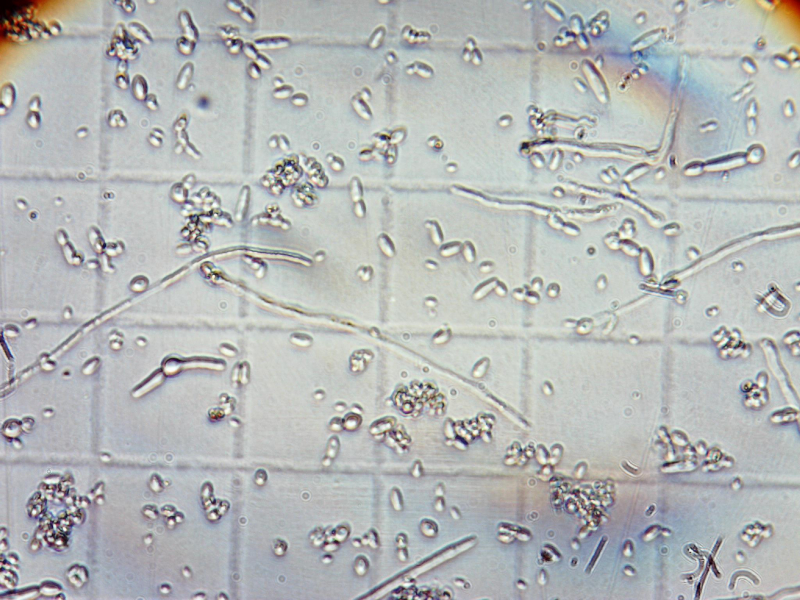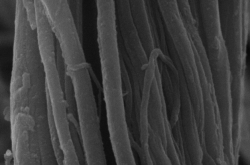Brettanomyces is a distant relative of Saccharomyces cerevisiae, the common brewing yeast. They are especially renowned for their dual purpose in food fermentation. On the one hand, S. cerevisiae is a spoiler of various beverages, such as wine, cider, and dairy products, and on the other, it adds the necessary flavors to fermented drinks, for example, the Belgian lambic and gueuze beers.
The species demonstrates a wide range of adaptation mechanisms, allowing it to survive in unfavorable conditions, one of them being the formation of pseudomycelium. In the picture, it resembles a mass of long thread-like cells.
The formation occurs through cell elongation due to the mechanism that disturbs their division. The cause lies in the delayed development of cells, which leads to their directed growth without separation after cytokinesis. It forms a pseudomycelium, filaments that only outwardly resemble the filaments of the mycelium of fungi and that of macromycetes (the so-called mycelium of forest mushrooms). The pseudomycelium differs from the true mycelium not only by its formation mechanism but also by its structural features, which can only be observed with a microscope.
Brettanomyces forms pseudomycelium in response to stress caused by changes in aeration conditions, namely, a sharp drop in oxygen concentration during the cultivation of Brettanomyces Bruxellensis (WY5112). Under optimal conditions, the cells are usually oval-shaped.
The picture was taken using a Zeiss light microscope and ImageProc software with x640 magnification. The experiments were carried out at ITMO’s Faculty of Biotechnologies under the supervision of Dr. Vera Ivanova.
The research aims to determine the mechanisms of adaptation and survival of microorganisms in production and assess the prospects of using Brettanomyces as a source of β-glucans, natural components of their cell walls. Yeast β-glucans have received special attention for their biological activity, immunostimulatory, anti-inflammatory, antimicrobial, and antitumor properties, as well as their ability to reduce high blood sugar and cholesterol levels. However, the β-glucans of Brettanomyces are still not sufficiently studied.
The research was conducted within the framework of the R&D project No. 617027 “Resource-saving ecologically safe biotechnologies for functional and specialized products based on deep processing of food raw materials.”
Ivanova, V. A. (2020). Promising sources of beta-glucans. Collected Papers of the Plenary Session of the IX Congress of Young Scientists, 10–13.
Meledina, T. V., Ivanova, V. A., & Davydenko, S. G. (2017). Prospects for the use of Brettanomyces in brewing. Almanac of Scientific Works of Young Scientists of ITMO University, Vol. 1, 193-196
Ivanova, V. A. (2018). Morphological features of Brettanomyces. Collected Abstracts of the Congress of Young Scientists. Digital Edition, https://openbooks.itmo.ru/ru/file/6778/6778.pdf





